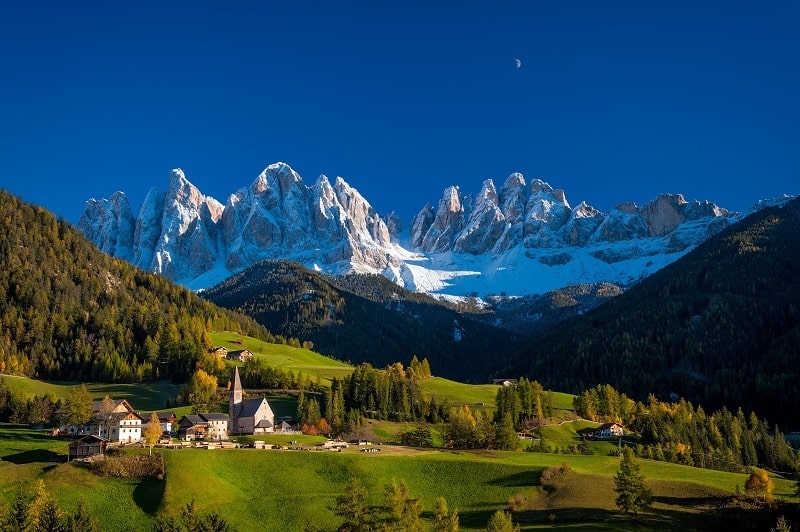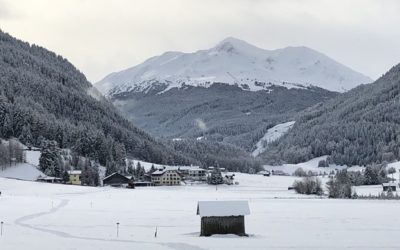Trentino Alto-Adige / Trentino Südtirol.
If there's one region in Italy that gives visitors a change of scenery, it's this one.
When we think of "Italy", we think of the Renaissance, Dolce Vita, Mediterranean cuisine, warmth, fountains, etc. Here, we quickly realize that we're changing worlds.
The region is divided into two provinces: in the south, the province of Trento, the TrentinoItalian is spoken here, so it's a bit like Italy, but the mountain scenery, the Dolomites, and the local dialect (Ladin) make us realize that we're in a territory of transition between two worlds.
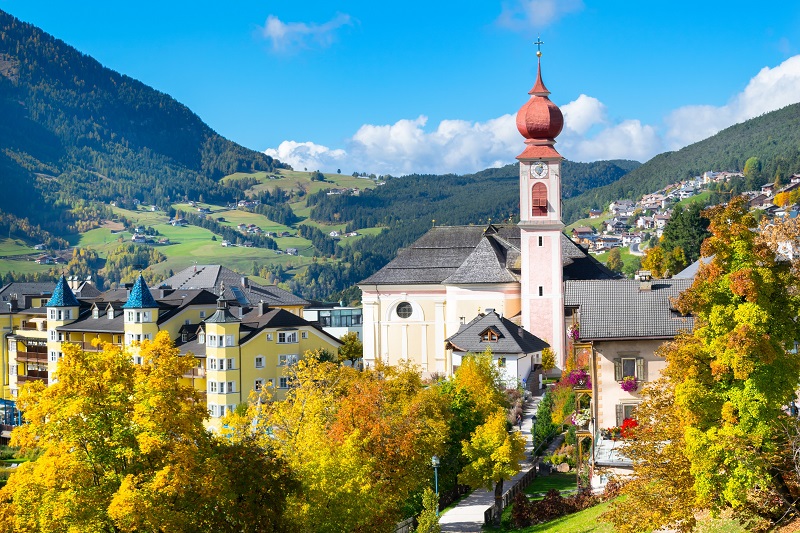
The other world is the more northerly province of Bolzano, Südtirol.
A large mountain town, rather like Grenoble or Innsbruck, a capital of the Alps.
Here, the official language is German, and Italian and German are bilingual, but in reality, the further you get from Bolzano, the less Italian you hear. While road signs are written in both languages, advertising posters, announcements of local events and other information are mostly in German.
This is the SüdtirolThe Adige is the river that flows down from the glaciers of the Val Venosta, crossing the entire region before passing under the bridges of Verona and continuing on to the Adriatic Sea.
Historically, we can sum it up by saying that it's a piece of Tyrol, which was on the wrong side of the mountains to be considered geographically as part of what is today in Austria.
Nevertheless, it has been part of the Tyrol for centuries, attached to Italy after the First World War, then "Italianized" during the Fascist regime, before regaining an ever-greater form of autonomy over time right up to the present day. This history has shaped its present-day character, which you are about to discover.

This difference is also reflected in the cuisine, which is more refined and much closer to Tyrolean cuisine in Südtirol, and simple, based on mountain produce in Trentino. One thing they have in common, however, is that the climate south of the Alps favors the cultivation of vines, and many wines are produced in both provinces. One of them, Traminer (terroir of Termeno/Tramin on the wine route between Bolzano and Trento), has traveled far and wide, eventually landing in Alsace and giving rise to a variant, the very famous Gewürztraminer.
Merano/Meran, the spa town, is the quintessential example of the culinary pleasures and art of living that unite this region with the rest of Italy: a town of waters and games, surrounded by vineyards and mountains, facing the southern sun, the most Italian of the Südtirol towns in terms of visitor numbers, is just a few kilometers from a village called... Tirolo/Tirol, the cradle of a nation. It was here, in this village castle, that the line of Counts of Tyrol, who ruled over much of the Alps, originated.

Geographically, Südtirol is shaped like an eagle, the symbol of Tyrol.
If the head could be represented by the Isarco/Eisack valley, which rises from Bolzano towards the Brenner to link Italy to northern Europe via Austria and Germany, the wings would be the two great valleys: to the west, the Val Venosta (Vinschgau), at the bottom of which flows the Adige river upstream and downstream of the beautiful spa town of Merano/Meran, and which communicates with Lombardy, Switzerland and Austria, and to the east, the Val Pusteria (Pustertal), former domain of the lords of Brunico/Bruneck, which communicates with Veneto and Austria via low-altitude passes.
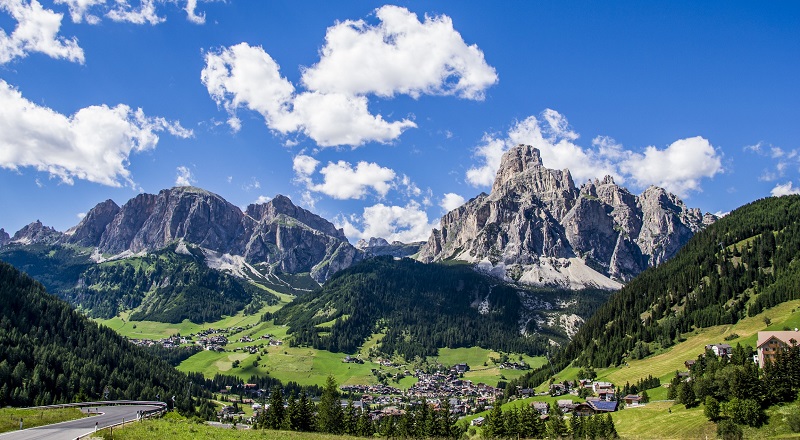
Further south, Trentino, which has always remained very Italian, and a symbol of Italian resistance against the Austrians (like Trieste), has a less evocative shape, but several large valleys stand out: the Val di Sole and Valli Giudicarie to the west, and the Valsugana and Val di Fiemme, which continue into the Val di Fassa to the east.
All these valleys are inhabited year-round, and the inhabitants earn their living from farming, livestock breeding, commerce and, of course, tourism. However, you won't find the concrete ski resorts of the '60s or '70s in this region, as you might find in France or Switzerland.
Here, the traditional habitat and rural character that make this region so charming have been preserved. But there are also some fantastic ski areas.
Madonna di Campiglio, Val Gardena (Ortisei and Selva), San Martino di Castrozza, Canazei, Val Senales (which is rather modern), Solda at the foot of the Ortles, or the KronPlatz between Brunico and Val Marebbe for downhill skiing are just a few examples; and the large Nordic areas of Val Pusteria (Dobbiaco/Toblach, San Candido/Innichen, Sesto/Sexten, Anterselva/Antholz or the Gsiesertal) with their flat, wooded backdrops, ideal for Nordic disciplines.
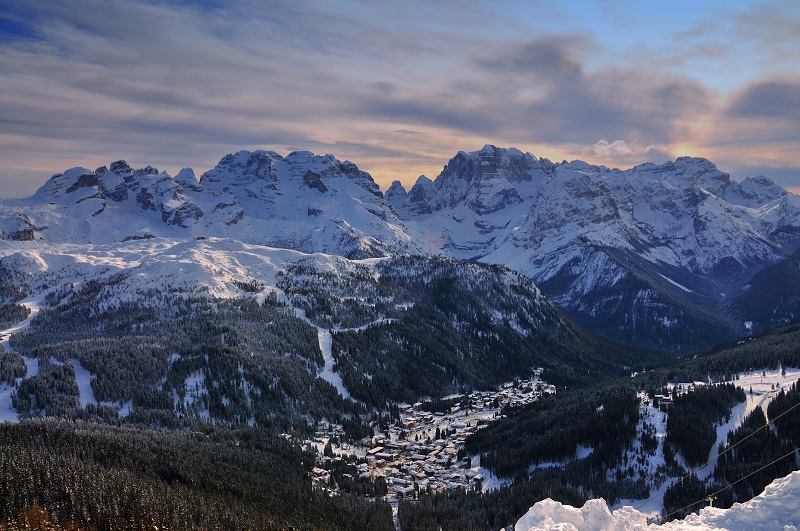
These ski areas are perfectly integrated into the rest of the landscape, as they are often set back from the small villages that huddle around churches, most often with tapering or bulbous bell towers.
But the main attraction here is the Dolomites.
Straddling the VenetoTrentino and Sudtirol, and even Friulithis mountain range of peaks, peaks, walls and stony ridges, whose colors change according to the time of day, is a delight for climbing enthusiasts. At the foot of these ochre or golden cliffs, you can enjoy hiking, mountain biking or road cycling in summer, tackling the many passes that circle the area, and skiing in winter in the many villages equipped with ski lifts giving access to sunny, panoramic ski areas.
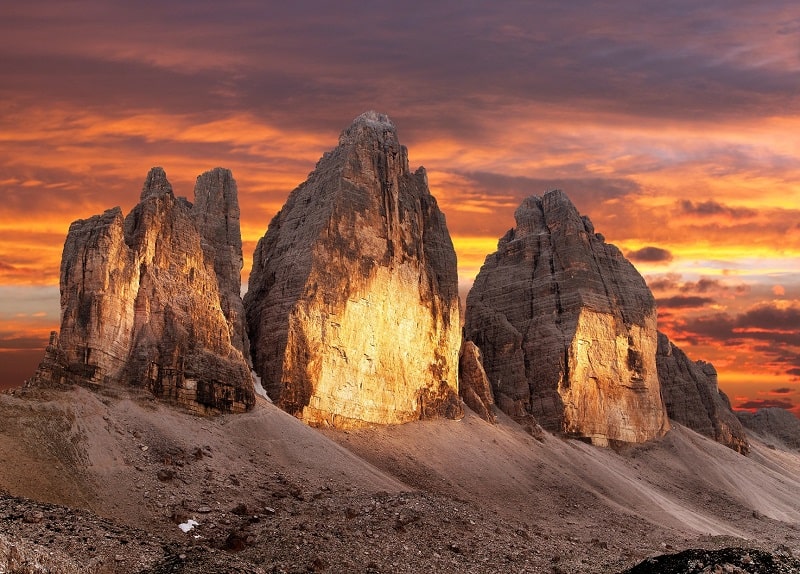
The best places to enjoy the Dolomites are around Bolzano with the Catinaccio, Val Gardena and Odles, Dobbiaco with the Sesto Dolomites and further south towards San Martino di Castrozza with the Pale di San Martino.
But the most grandiose itinerary remains the tour of the Sella massif and its four passes.
The Dolomites also extend into Veneto, around Cortina d'Ampezzo and the Cadore region.
Veneto
Italy's economic powerhouse, thanks to its dense network of small and medium-sized companies, some of them world-renowned (Geox, Benetton, Luxottica), the Veneto can also count on its undeniable tourist appeal. Venice, Verona, Lake Garda (one of its shores), Padua... the vineyards of Valpolicella, and the... Dolomites !
The mountains cover the entire north of this region, and Venice is in fact only 2 hours from Cortina d'Ampezzo, Italy's "Megève". All of which adds to the appeal of this region for travelers who want to combine the beauty of art with the beauty of nature during their stay.
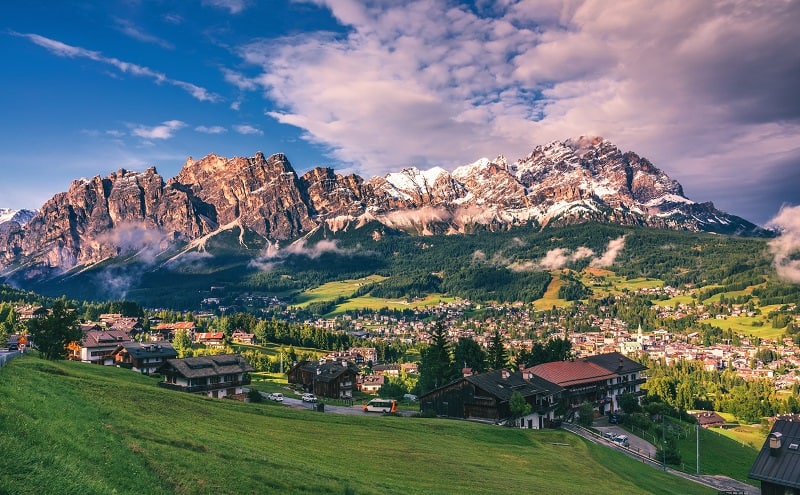
Cortina d'Ampezzo, at the bottom of a green and sunny conch, is surrounded on all four sides by high peaks topping 3000m (Tofane, Monte Cristallo, Sorapis, Pelmo...). From here you can visit an absolutely magnificent mountain region, make a foray into Südtirol and discover its Austrian influences, or into Trentino and its food rich in local produce. You'll be in Cadore, a region that covers the valleys that flow into the Piave, one of Italy's great rivers, best known for the feats of arms of the Italian army during the First World War. Other villages nestled in forest-covered valleys will welcome you for nature breaks in summer and winter in this spectacular Dolomite environment: Auronzo di Cadore, for example, or Sappada, north of the Piave valley.
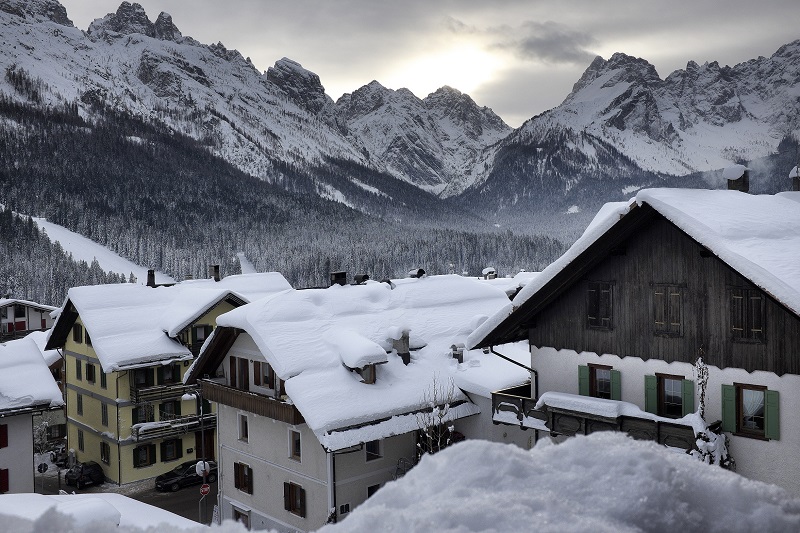
But also the Agordo valley, as far as Falcade to see the other side of the Pale de San Martino, or the Marmolada and its small glacier.
Friuli
The Friulion the border with Austria and Slovenia, offers both the beaches of the Adriatic Sea and the snow-capped mountains of the Carnic Alps (on the Austrian border) and the Julian Alps (on the Slovenian border).

Throughout this border region, your eyes will never cease to wander up the mountain slopes to sweep across valley bottoms dotted with small villages, then lose themselves in dark forests, before emerging onto the rocky sculptures of the Dolomites.
Whether in the Carnia region around Coneglians, with the ski resort of Ravascletto-Zoncolan, or towards Tarvisio, in the Val Bruna, or near the Predil lakes, the peace and quiet of these unspoilt places will rest your mind for a while before you set off again for Slovenia, Austria or the beautiful city of Trieste.
You may also be interested in these articles:
Austria, Alpine country
Alpine country par excellence, Austria offers a diversity of landscapes and activities that AlpAddict is happy to help you discover.
Bavaria: the romantic Alps
Bavaria, between cities of art and natural beauty, the Alps are present in all their components: lakes, valleys and peaks await you.

